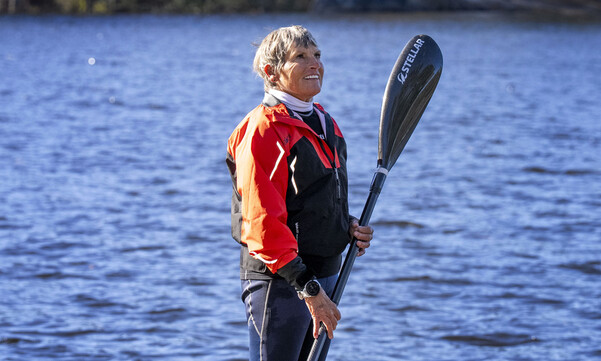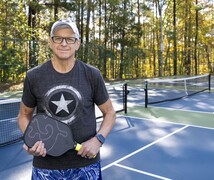A persistent shoulder injury threatened to throw competitive swimmer Ashley Twichell off course just as she was ramping up her training to qualify for the only open water spot on the 2016 U.S. Olympic team. She started training again after undergoing surgery last year. “The turnaround time from my surgery to the biggest competition of my life was pretty short,” she said. “For the surgery to have gone as smoothly as it did is pretty awesome.”
Physical Therapy Since Middle School
Twichell of Raleigh has been a competitive swimmer since she was six years old, and getting physical therapy for her shoulder since middle school. “Shoulder problems run in my family,” said Twichell, now 25. “My brother had shoulder issues, my dad’s had shoulder surgery.” That family history, combined with the repetitive movements of long-distance freestyle, made Twichell’s own shoulder struggles a constant threat.
“I considered getting surgery a couple of times but always tried to avoid it,” she said.
By June of 2014, avoidance was no longer an option. “The pain was almost like arthritis,” she said. “I couldn’t sleep at night, I couldn’t lift my arm more than six inches from my side. I had no range of motion and I had a dull ache that went from my bicep through my shoulder and all the way down my back.”
“My shoulder is close to 100 percent and I’m back to the intensity and volume I had before the injury.”
Minimally Invasive Surgery Removed Source of Pain
Twichell went to see a Duke sports medicine specialist who told her she was her own worst enemy. She was training so hard that she was developing pain that was limiting her ability to progress.
Twichell underwent a minimally invasive technique that removed scar tissue and corrected bursitis that was causing her pain, limiting her range of motion and diminishing her strength and power. It allowed her to progress with her training, and work on getting the strength she needed to stabilize her shoulder.
After the procedure, Twichell went through rehab and physical therapy at Duke, and then started working with Jason Shutt, a physical therapist and movement coach with Duke Sports Performance.
Training the Entire Athlete
The first step was a series of functional movement tests that appraises how a person moves, explained Shutt, who works with professional athletes in nearly every sport.
"We train the entire athlete not just the site of injury in order to optimize their performance,” said Shutt. “We begin with full body movement tests and assessments to determine strengths and weaknesses. We use the results to create a complete training strategy with the goals being improved movement competency and durability. This allows the natural ability and skills of a phenomenal athlete like Ashley to flourish."
Shutt and Twichell started with a training plan that challenged her strengths, and corrected areas where she was compensating for her shoulder and had weakness. Gradually, they progressed to weight bearing and load carrying activities, which Twichell had avoided to protect her shoulder. “We needed to progress her from corrective exercises through strength and ultimately to ballistic full body movements, which will carry over to her sport,” Shutt said.
Close to 100 Percent
Eventually Twichell returned to her grueling training. “My shoulder is close to 100 percent and I’m back to the intensity and volume I had before the injury,” Twichell said recently during a break from the pool. “It’s the best I could have hoped for.”
Ashley Twichell on WRAL-TV
Watch this interview with Ashley just before she set out for the Olympic qualifiers.





